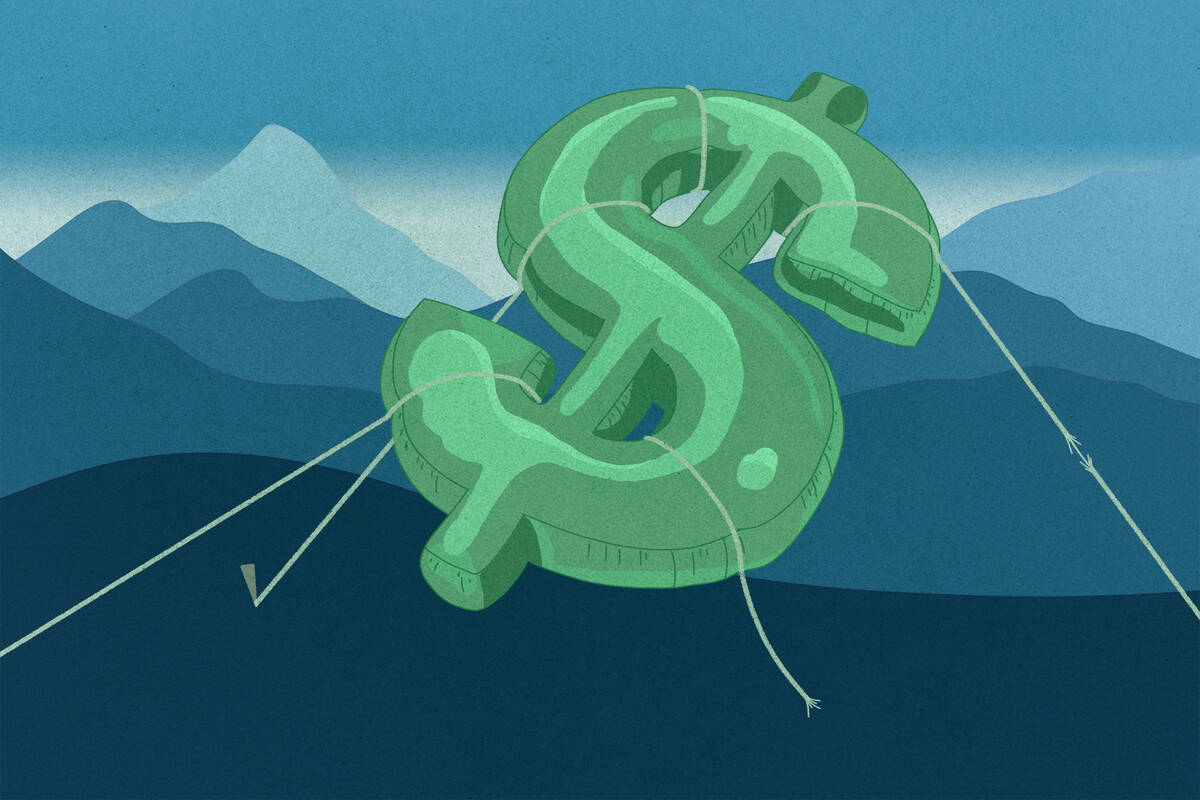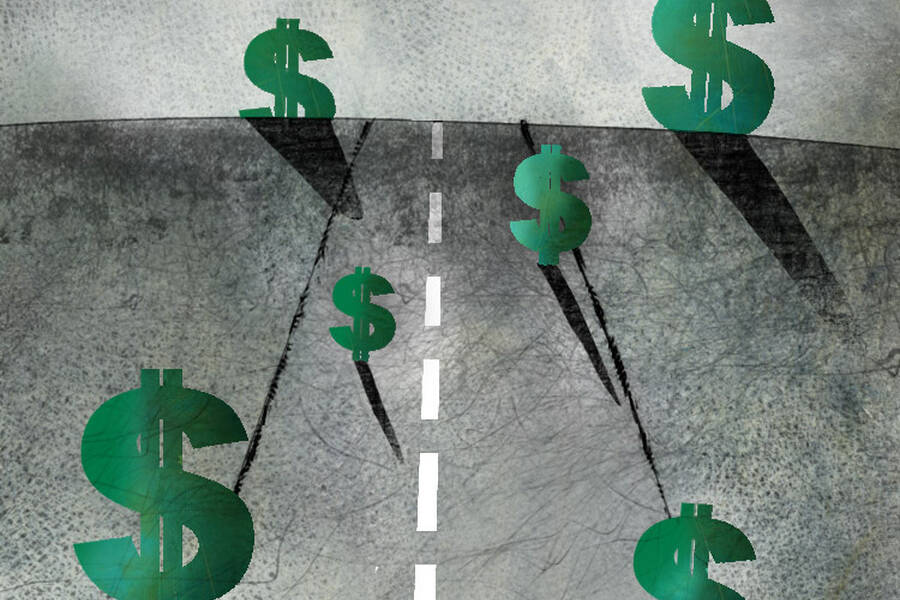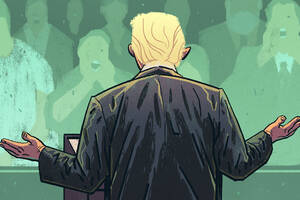
Lisa Röper
Larry Summers is not known for being shy about his views on economic policy.
Summers, a professor at Harvard University, is a former Secretary of the Treasury for President Clinton and Director of the National Economic Council for President Obama.
At a recent keynote, delivered at the Kellogg Real Estate Conference and Venture Competition, he was characteristically frank, arguing forcefully that inflation in the U.S. is problematically high, and that the Fed waited far too long to act on inflation.
In Summers’s view, the Fed’s more recent attempts to achieve a “soft landing” by cooling the economy just enough to decrease inflation without sending it on a downward spiral are unlikely to succeed. “Unfortunately, history is not very kind to a soft landing,” he said, pointing to the fact that 70 percent of the time, tightening monetary policy is followed by a recession.
After delivering his keynote, he sat for a Q&A with Jan Eberly, a professor of finance and senior associate dean at Kellogg, and a former Chief Economist at the Treasury.
This conversation has been edited for length and clarity.
Eberly: You’ve been pretty clear about expecting some version of “stagflation,” with the relative weights on “stagnation” and “inflation” varying depending on how things play out. So if we’re following the real-time data that we see, which includes continued supply disruptions, shutdowns in China, and the war between Russia and Ukraine, what should we be looking for to get a sense of whether inflation might abate over time?
Summers: My view is that it’s best to think of wage inflation as a core measure of inflation. Ultimately costs go back to wages. And if wage growth is high, it’s hard to see how you’re going to have enduringly low inflation. And if wage growth is low, it’s hard to see how you’re going to have enduringly high inflation. So I would be watching wage growth.
You have to be a little careful, because you want to adjust for changes in the composition of who’s working. If a lot of teenagers are hired, you will see average wages go down, but it doesn’t prove anything. So you want to look at growth in wages adjusted for the composition of employment.
Eberly: Do you think it’s possible we will get a decline in inflation without the need to drive the economy to a recession? Do we need to get out of the hot labor market completely in order to bring inflation down?
Summers: So one of the things that I’ve learned over time is it’s best to think in terms of what’s most likely and what seems probable to you. All absolute statements about these things are foolish.
What I see right now is that we have five and a half percent wage inflation (roughly, depending on which measure you choose); that the number for the last quarter is higher than the number for the last year; and that labor markets are getting tighter, not getting looser. So at the moment, I see more upwards pressures on that five and a half than I see downwards pressure on that five and a half.
By the way, it’s often remarked that we’re seeing faster wage inflation for low-wage workers. I suspect some of that is because McDonald’s resets its wages every month and Northwestern resets its wages once a year. And so if everybody’s wages are headed upwards, you’ll see it more quickly in the more casual parts of the labor market.
The wage growth statistics we’re looking at right now are the wage growth statistics from January, from February, before gas prices went up. So those wage statistics are about the shortage of labor and about employers competing for relatively scarce workers.
It’s hard to imagine that a lot of people are going to come off the sidelines of being out of the labor force as COVID winds down, that they’re going to get jobs, and that the [job] vacancy rate is going to fall—and when the vacancy rate falls, that’s going to reduce the amount of pressure on wages. [If] those people get those jobs, they’re going to earn more money and they’re going to spend it, which is in turn going to raise demand.
So I think [that scenario is] pretty unlikely. And then the question would be, well, can you hit it just right? Can you have just a little reduction in vacancies and a little increase in unemployment, and can that be enough to bring wage growth down conceivably? I don’t think that’s been the historical experience.
Eberly: How long might this period of elevated inflation last?
The factors that people raise include obviously the conflict in Ukraine, but also the sanctions that are put in place; the disruptions in China in the short run, but then over the longer run the shortening of supply chains or reshoring, which could also put upward pressure on prices. What do the long-run pressures look like to you?
Summers: My best guess is that the kind of ruthlessly competitive economy that contributed to a low-inflation era is attenuating, and that some of that is less competition from abroad, as people re-shore. Some of that is a smaller fraction of the economy being manufactured goods and more being services. Some of that is some resurgence of labor power and unions. Some of that is various things like the factors you mentioned that will tend to retard productivity growth.
So I think it’s going to be a little harder to maintain really low inflation than it was historically. I guess I’d be quite surprised if the inflation rate as measured by the Consumer Price Index over the next five years was below 3 percent.
Eberly: Let’s talk monetary policy. The Fed has a new operating policy that they put in place over the last couple of years. Do you think that’s the right operating policy? Instead of average inflation targeting, do they need to have a different approach for a different world?
I’d be quite surprised if the inflation rate as measured by the Consumer Price Index over the next five years was below 3 percent.
— Larry Summers
Summers: To be blunt, I think that policy was almost completely ill-conceived. Nobody really cares at any moment what inflation was five years ago. So saying that inflation’s going to average out over a long period of time is inviting fairly wide swings to the rate of inflation.
I think the statement they made in association with that policy, that they would not respond to the threat of inflation under any circumstances but would wait only until they saw inflation, was a change from long-standing practice. And given that monetary policy operates with a substantial lag, it was a mistake. And I think the statement that even if they saw inflation, they wouldn’t tighten monetary policy unless they judged the economy to be at full employment was a confusion as well, because why would you have rising inflation if in some sense you didn’t have an overheating economy relative to its potential?
I think those statements were a response to the economic environment that occurred before the pandemic.
In the context of 12-percent-of-GDP stimulus programs, it doesn’t really have much to do with the current situation. So I think the Fed should make it clear that it has shifted to a framework appropriate to a moment where disinflation is the primary policy challenge.
Eberly: Let me ask a little bit about the fiscal side. The infrastructure bill was passed and there’s discussion of additional expenditure on various forms of human and physical infrastructure. One of the reservations about additional spending on infrastructure that has been stated is that it could fuel additional inflation. Do you find that concern convincing?
Summers: I think the right thing to do is to invest more in infrastructure and to pay for it with taxes. If you invest more in infrastructure and you pay for it with taxes, you’re not adding a lot to aggregate demand. And you are in the long term adding to the capacity of the economy.
I think when my Democratic friends said, “No, infrastructure investment is deflationary, because it’s going to expand capacity,” they were being quite unrealistic given the five years that it takes infrastructure to come online.
I think when my Republican friends said, “Uh oh, we can’t do any infrastructure investment, because it’ll add to inflation,” they were failing to recognize that there were other things that could be done to contain demand, like tax increases.
I would say more generally that I think there has been a tendency for concern about the future to overemphasize the debt issue relative to other issues. Looking at the world that my children are inheriting, or that, when I have grandchildren, they will inherit, I am worried that we will not have a well-functioning society with the competent civil service, with quality teachers in the schools, with a national science capacity that continues to lead the world. I’m a lot more worried about that than I am that we’ll have too much paper debt that was issued at a 2 percent interest rate.
My sense is there are a lot of high-social-return public investments that are available that we should do, and that we should pay for.
Eberly: A lot of people are wondering what your biggest concerns are, as well as the biggest opportunities you see. You just told us one of your biggest concerns. Could you leave us with the biggest opportunities?
Summers: The students that I teach are a lot more impressive than the students were when I was a student. We here in this country are privileged to live in the country that people from all over the world are hugely eager to come to more than any other. We are the only country in this world where you can raise your first hundred million dollars before you buy your first suit. And that is a powerful spur to creativity and to entrepreneurship. And the lesson of American history is a history of resilience.
Eberly: The only thing I would add is that that student who raises a hundred million dollars these days will probably never buy a suit.
Summers: That is probably a good point!
Jess Love is editor in chief of Kellogg Insight.



